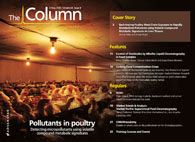Cancer identification
A team of scientists has employed mass spectrometry in an effort to identify and classify cancers, when the source is not readily identifiable.
A team of scientists has employed mass spectrometry in an effort to identify and classify cancers, when the source is not readily identifiable.1 By identifying the specific cancer the appropriate treatment can be assigned and therefore the chance of a more successful outcome is realized.
The team performed MALDI imaging to generate proteomic signatures for different tumours, which were then used to classify cancer types. Six types of cancer located at different organ sites (esophagus, breast, colon, liver, stomach and thyroid gland) were examined through a total of 171 samples. The samples were classified using two algorithms for a training and test set. The Support Vector Machine and Random Forest yielded overall accuracies of 82.74 and 81.18%, respectively. Liver metastasis samples could be identified with a high accuracy from the primary tumours of colon cancer and hepatocellular carcinoma. In addition, colon cancer liver metastasis samples could be successfully classified when using colon cancer primary tumours to create the training set.
The findings demonstrated that MALDI imaging-derived proteomic classifiers could discriminate between different tumour types at both the same site and different sites. The potential for personalized treatment can therefore be realized and a greater chance of a successful treatment is possible.
1. Axel Walch et al, J. Proteome Res., 11(3), 1996–2003 (2012).
This story originally appeared in The Column. Click here to view that issue.


.png&w=3840&q=75)

.png&w=3840&q=75)



.png&w=3840&q=75)



.png&w=3840&q=75)










